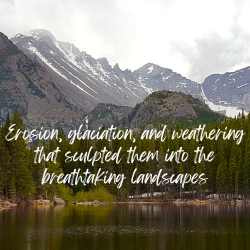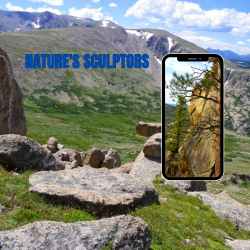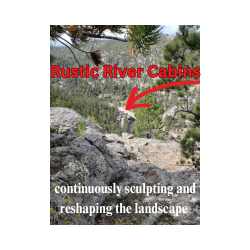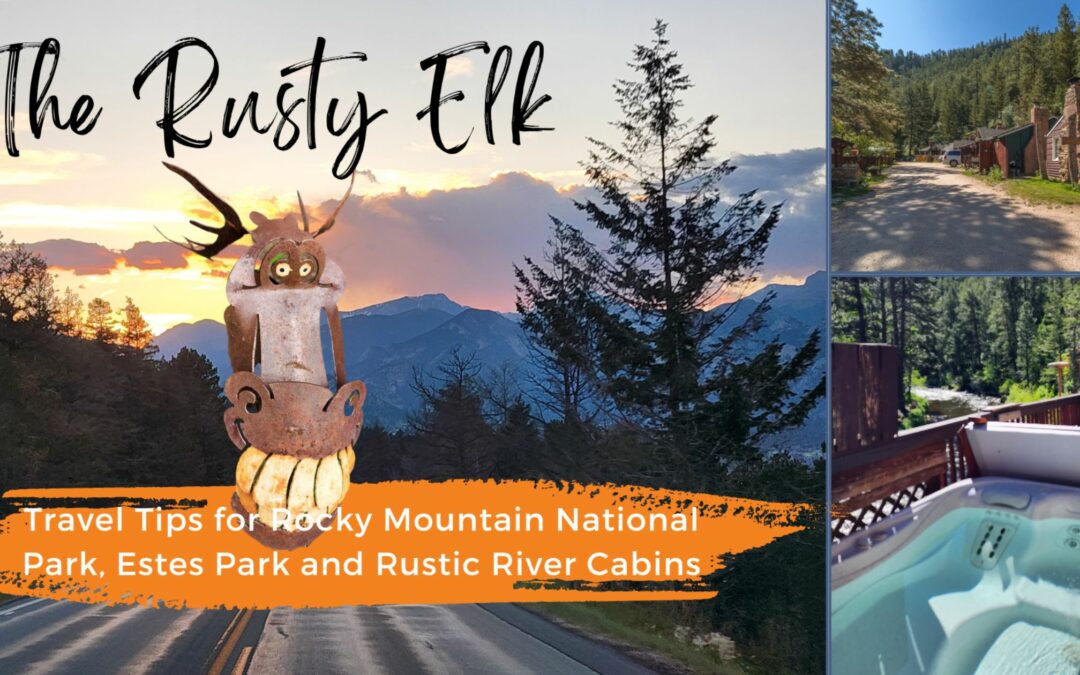When you stand in Estes Park, gazing up at the towering peaks of Rocky Mountain National Park, it’s easy to feel small. These majestic mountains, with their snow-capped summits and rugged slopes, have captivated humans for millennia. They’ve shaped the climate, wildlife, and human history of Colorado and beyond.
But have you ever wondered how these geological giants came to be?
The story of the Rocky Mountains is one of epic proportions, spanning an almost unfathomable amount of time. It’s a tale of colliding continents, ancient seas, and forces so powerful they can lift the very earth towards the sky. The Rockies you see today are the result of not just millions, but billions of years of Earth’s history.
From humble beginnings beneath prehistoric oceans to their current majestic form, the formation of the Rocky Mountains is a testament to the dynamic nature of our planet. In this post, we’ll take you on a journey through time, exploring the geological processes that gave birth to these iconic peaks.
Prepare to be amazed as we unravel the story of how a flat seabed transformed into the stunning mountain range we know today. It’s a tale of persistence, power, and perpetual change – much like the spirit of adventure that draws so many to these mountains today.
So, let’s strap on our geological time-traveling boots and step back – way back – to where it all began, nearly two billion years ago…
Ocean Turned Mountains! (1.7 billion to 300 million years ago)
Imagine diving underwater and seeing only fish and seaweed instead of mountains! That’s exactly what you would have found 1.7 billion years ago. Colorado, along with much of North America, was submerged beneath warm, tropical waters.
This ancient sea was teeming with trilobites and shellfish but mostly algae and bacteria at first, but later evolving into more complex organisms. As these creatures lived and died, their remains settled on the sea floor, layer upon layer, for millions of years.
But it wasn’t just organic matter accumulating. Rivers from the distant land carried sediments – tiny particles of rock and minerals – into this sea. These sediments, along with the remains of trilobites and shellfish, slowly built up over time kind of like a giant lasagna!

Under the immense pressure of the overlying water and subsequent layers, these deposits began to compress and cement together. This process formed sedimentary rocks such as limestone, sandstone, and shale. Each layer of rock tells a story of the environmental conditions at the time it was formed.
Periodically, the sea levels would change due to global climate fluctuations. During times when the seas receded, the exposed land would erode, only to be covered again when the waters returned. This cycle repeated numerous times over hundreds of millions of years, creating a complex layer cake of different rock types.
These sedimentary rocks would later play a crucial role in shaping the landscape of the Rockies. They form many of the colorful bands you see in the mountains today, each stripe a page in Colorado’s ancient history book.
It’s mind-boggling to think that the roots of the towering Rocky Mountains began as humble layers of sediment at the bottom of an ancient sea. But as we’ll see in the next section, the story of the Rockies was just beginning…
Sculpting the Peaks: Fast forward millions of years… (55 million years ago to present):
While the Laramide Orogeny gave birth to the Rocky Mountains, it was the relentless work of erosion, glaciation, and weathering that sculpted them into the breathtaking landscapes we see today in Rocky Mountain National Park and surrounding areas.

Erosion: The Constant Sculptor
From the moment the peaks were thrust upward, erosion began its work. Rain, wind, and temperature fluctuations slowly but persistently wore away at the rock. Rivers and streams, some of which we still see today like the Big Thompson, carved deep valleys and canyons. This process continues even now, reminding us that the mountains are ever-changing.
Glaciation: The Ice Age Artist
Perhaps the most dramatic sculpting occurred during the Pleistocene epoch, commonly known as the Ice Age, which began about 2.6 million years ago. Massive glaciers formed in the high mountain valleys, some reaching lengths of 15 miles and depths of 1,000 feet. As these ice giants moved, they:
1. Carved U-shaped valleys, like the one you see in Moraine Park
2. Created cirques – bowl-shaped depressions at the head of a valley, such as Emerald Lake
3. Left behind moraines – ridges of rock debris that mark the edges of former glaciers
4. Deposited erratic boulders – large rocks carried from distant locations
The glaciers retreated about 15,000 years ago, leaving behind features like glacial lakes, including Bear Lake and Mills Lake.
Weathering: The Detail Worker
Chemical and physical weathering processes have been at work throughout this time, breaking down rocks and creating the diverse textures we see:
1. Freeze-thaw cycles cause rocks to crack and split (kind of like our skin in this dry air)
2. Chemical reactions, especially in our granite-rich mountains, cause mineral decomposition
3. Biological weathering from plant roots and lichens further breaks down rock surfaces
These processes created iconic features like the jagged spires of Longs Peak and the rounded boulders found throughout the park.
The Dramatic Landscapes of Today

The interplay of these forces has given us the stunning vistas we enjoy today:
– Sharp, craggy peaks reaching for the sky
– Wide, U-shaped valleys perfect for wildlife viewing
– Crystal-clear alpine lakes nestled in high basins
– Tumbling waterfalls and rushing mountain streams
– Diverse ecosystems ranging from montane forests to alpine tundra
Every vista in Rocky Mountain National Park tells a story of millions of years of geological processes. The next time you stand at an overlook or hike a trail, remember that you’re witnessing the ongoing work of nature’s sculptors.
The Rockies Today and Beyond
While the dramatic mountain-building events of the past have subsided, the Rocky Mountains are far from static. Geological processes continue to shape the landscape, albeit at a much slower pace:
1. Erosion remains a constant force, with wind, water, and ice gradually wearing down the peaks.
2. The region experiences occasional small earthquakes, reminders of the tectonic forces still at work beneath our feet.
3. Rockfalls and landslides periodically reshape cliff faces and valley slopes.
4. Climate change is affecting the mountains, with retreating glaciers and changing vegetation patterns.
These ongoing processes ensure that the Rockies we see today are slightly different from those our grandparents saw, and will be different still for future generations.
Conclusion: A Timeless Tale of Stone
As we conclude our journey through time, it’s staggering to consider the immense timescale of mountain formation. The Rocky Mountains we admire today are the product of nearly two billion years of Earth’s history. From ancient sea beds to tectonic collisions, from the reign of dinosaurs to the carving touch of glaciers, every era has left its mark on these peaks.
Standing in Estes Park or Rocky Mountain National Park, you’re witnessing just a moment in this ongoing story. The forces that built these mountains are still at work, continuously sculpting and reshaping the landscape, though at a pace imperceptible in our brief human lifetimes.
This geological narrative sets the stage for the human history that would unfold in these mountains. In our next post, we’ll explore how the first humans encountered and interacted with this awe-inspiring landscape. From ancient Native American tribes to the first European explorers, we’ll discover how the Rockies have shaped human experience and culture for thousands of years.

Join us next time as we transition from the epic tale of mountain formation to the equally fascinating story of human history in Rocky Mountain National Park and Estes Park. The stage has been set by forces of nature; now it’s time to introduce the human actors to this grand theater of stone and sky.

